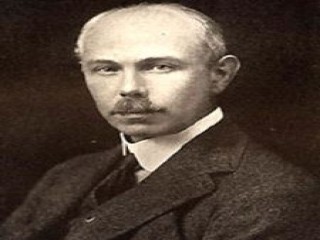
Francis William Aston biography
Date of birth : 1877-09-01
Date of death : 1945-11-20
Birthplace : Harborne, Birmingham
Nationality : British
Category : Science and Technology
Last modified : 2011-05-03
Credited as : Chemist, mass spectrograph, 1922 Nobel Prize in Chemistry
The British chemist and physicist Francis William Aston invented the mass spectrograph and discovered the isotopic complexity of the elements.
Francis Aston was born on Sept. 1, 1877, at Harborne, Birmingham, where his father was a metal merchant and ran a small farm. He studied chemistry at Mason College (which later became the University of Birmingham). In his spare time he trained himself in the various arts of apparatus construction, especially glassblowing. When his scholarship expired, he took a post with a brewery firm. After 3 years he returned to the University of Birmingham. In 1910 an invitation arrived from J. J. Thomson to join him at the Cavendish Laboratory, Cambridge.
Thomson was examining positive "rays" produced in electric-discharge tubes at low pressure. These were in fact atoms stripped of some or all of their outer electrons and thus carried an overall positive charge. Thomson had obtained parabolic tracks by submitting the rays to the simultaneous application of magnetic and electrostatic fields. With Aston's help he discovered that neon gas had a small component that gave a separate parabolic track. Since each parabola was characterized by a unique mass-charge ratio, deductions concerning particle masses could be made, and it was concluded that the atomic masses of the major and minor components of neon were 20 and 22 respectively.
Aston then attempted to separate the two components by physical means and to measure their densities on a quartz microbalance of his own devising. In 1913 he achieved a partial separation by submitting the gas to repeated diffusions through pipe clay; small, but significant, differences in gas density were found for the two samples obtained.
Gradually, the concept of isotopes was becoming clearer and more generally accepted, and in 1919 Aston worked out some ideas on a new instrument which could give results indicative of mass alone. Unlike Thomson's apparatus, Aston's invention employed magnetic and electrostatic fields producing opposite deflections in the same plane. By focusing the beams through fine slits, Aston obtained a series of lines, each of which corresponded to a definite particle mass. The series of lines was a mass spectrum, and the original instrument was the first mass spectrograph.
With this equipment Aston began an examination of the isotopic composition of more than 50 elements. In those cases where neither the element nor any of its available compounds were volatile, he utilized a solid product containing the element as the anode of his discharge tube. In almost every case the isotopic mass was a whole number within the limits of experimental accuracy (1 in 1000). The only notable exception was hydrogen, 1.008. Thus isotopy was not a rare phenomenon, as some workers had supposed, but widespread and affecting most elements. Aston was led by these integral isotopic weights to conclude that all nuclei are composed of protons (of unit weight) and of negligibly light electrons.
The importance of precise values for the isotopic masses led Aston to design an improved mass spectrograph in 1925, with an accuracy of 1 in 10,000. A later instrument (1927) gave an accuracy improved by a factor of 10. With this refined apparatus he discovered a great many new isotopes, often present in only very small amounts in the natural element.
Many important consequences flowed from Aston's work on the mass spectrograph. As he himself recognized, the fractional isotopic weight of hydrogen implied that if it were converted to helium substantial amounts of the mass would be converted into energy. Using Albert Einstein's relativity relationship, Aston predicted that the energy liberated in a nuclear reaction of this kind would be enormous. His opinions were justified when the first atomic bomb was exploded a few months before his death.
The more immediate importance of the mass spectrograph was its ability to give data on nuclear masses with great precision, thus laying the foundations of the atomic energy industry. More recently, the mass spectrometer has proved an indispensable tool for structural investigations in organic chemistry.
The importance of Aston's work was quickly recognized, and in 1921 he was elected a fellow of the Royal Society. The following year he received the Nobel Prize in chemistry. His authoritative book Isotopes first appeared in 1922 and was followed by many other editions up to 1941. His other book, Mass Spectra and Isotopes, appeared in 1933.
In addition to his work at the Cavendish Laboratory, Aston made some valuable scientific contributions to the study of astronomical eclipses. In 1925 he photographed the sun's corona from Sumatra. He made expeditions to study the solar eclipses of 1932 and 1936 in Canada and Japan respectively, though clouds prevented direct observations. However, Aston was able to study the polarization of the light in the neighborhood of the eclipsed sun.
Aston never married. He was often accompanied on his travels by his sister, Helen, to whom he was deeply devoted. He died at Trinity College, Cambridge, on Nov. 20, 1945.
















